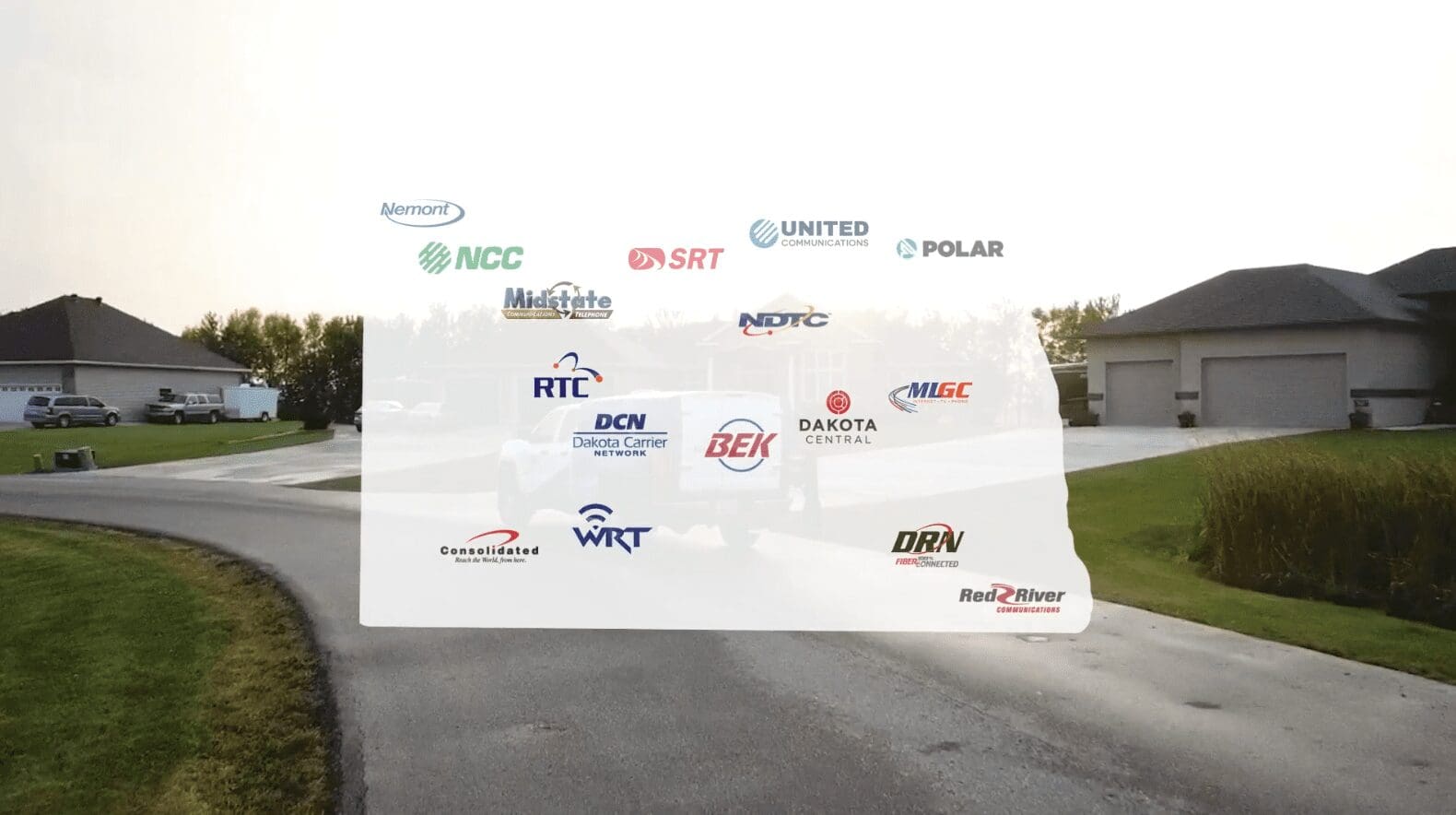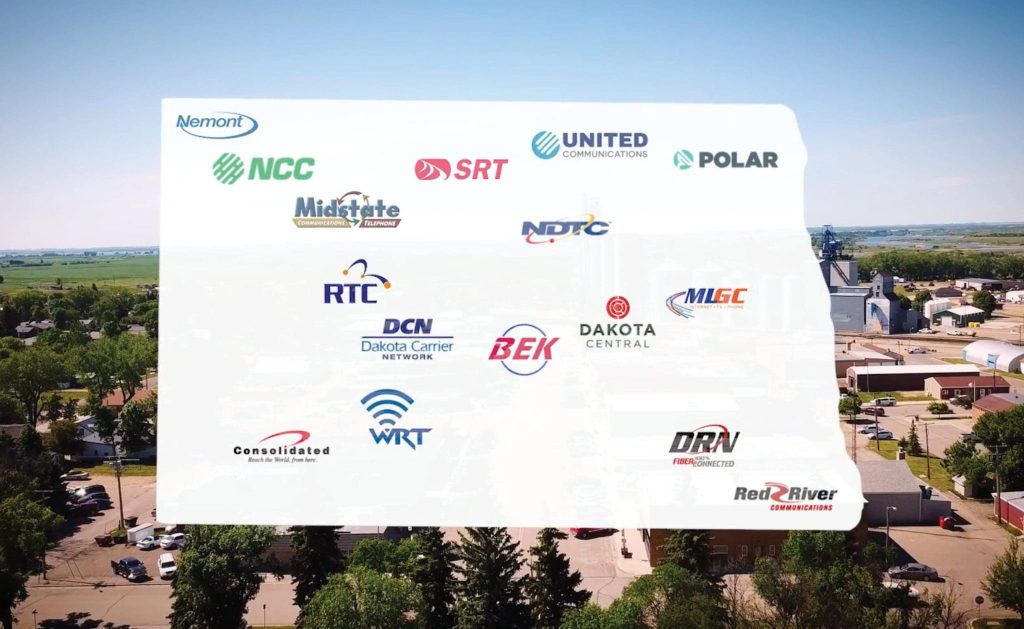
How a “flyover” state became a national leader in broadband connectivity.
These days, conventional wisdom would have you believe that anything west of the Appalachian Mountains and east of the Rockies is an Internet black hole—a vast expanse of land running on technology decades behind that of the Coasts.
But if you speak to a third-generation farmer in Langdon, a newspaper publisher in New Leipzig, or a performance horse breeder in Epping, you’ll soon learn that you don’t need to travel to Silicon Valley or New York City to find the best Internet speeds in America.
You can find them right here, in rural North Dakota.
According to recent data from the Federal Communications Commission (FCC), more than three-quarters of rural North Dakotans have access to fiber broadband, compared to only 20 percent of rural residents nationally. In fact, rural North Dakotans are more likely to have access to gigabit speeds than even urban Americans.
So, how has a “flyover” state like North Dakota emerged as a national leader in broadband connectivity?
Our unparalleled rural network can be traced back to 1953 when a group of North Dakota telephone cooperatives banded together to keep North Dakota connected. Today, almost 70 years later, this organization is known as the Broadband Association of North Dakota or BAND.
The 15 member organizations that form BAND have laid over 40,000 miles of fiber across the state, changing the lives of folks across North Dakota. But if you ask the people doing the work, they’ll tell you that they’re just doing what North Dakotans have always done: working hard, supporting one another, and pioneering new solutions to meet the needs of their neighbors.

“The members of BAND have taken it very seriously to deploy fiber optic facilities throughout the state,” said Keith Larson, Chief Executive Officer of Dakota Central, a BAND member organization. “Thanks to the collective efforts of the BAND members, we’ve been able to be one of the most connected states in the U.S.”
Getting Farther, Together
It all started at Bismarck’s Patterson Hotel. In March 1953, directors from nine North Dakota telephone cooperatives gathered there with a goal to guard against unfavorable legislation, share information and resources, and ensure that high-quality telephone service remained available across North Dakota.
At the time of that fateful first meeting, a majority of rural North Dakota residents still relied on party-line service, in which wires were strung from pole to pole and long-distance calls were prohibitively expensive. Today, rural areas of the state have access to some of the fastest and most affordable broadband technology anywhere in the nation. And while the technology that these companies provide has evolved over the past six decades, their mission—to ensure the highest quality communication technology is accessible to all North Dakotans—has not wavered.

In 1996, this mission led 14 BAND member companies to form the Dakota Carrier Network (DCN), a high-speed, large-capacity fiber backbone that spans the entire state. In this symbiotic relationship, BAND serves as a representative body, providing advocacy and education for its member organizations, while DCN serves as the single-point-of-contact for the North Dakota businesses and government networks—including all K-12 schools, colleges, and universities—who rely on the over 40,000 miles of fiber optic cabling deployed across the state.
Collaboration between the providers that make up DCN and BAND has laid the groundwork for innovation in our state, including an unprecedented educational technology system. In July 2019, DCN successfully connected every K-12 school in the state to fiber-based one-gigabit Internet, becoming the first state in the nation to achieve this milestone. Now all North Dakota schools, regardless of size or location, have access to the same high-speed internet.
Then, in March 2020, thousands of North Dakota students suddenly needed to complete their school year remotely due to the COVID-19 pandemic. Rural broadband providers were able to connect 99.8% of North Dakota students to high-speed home Internet in just a matter of weeks—all because a group of telephone cooperatives realized, more than half a century ago, that they could get farther by working together.
Serving Our Neighbors
If this spirit of collaboration is what paved the way for a broadband revolution in North Dakota, then a commitment to the people they serve is what keeps rural broadband providers charging ahead.
The member companies that form BAND and DCN continue to bring state-of-the-art technology to their communities not because it is profitable, but because it’s the right thing to do. Because unlike large national corporations, they are serving their neighbors, not just faceless customers.

They are serving people like Sean Feil, who farms barley, wheat, and soybeans 20 miles from Langdon. Before BAND member United Communications dug fiber out to Sean’s farm, if he needed to look up equipment on the Internet, he had to drive all the way back into town.
Now, a point-to-point Internet connection allows Sean to keep up-to-date on markets, weather, and equipment right from the field. But more importantly, broadband allows Sean to spend more time with his wife and their three young children.
“During the busy times, I can still stay in touch with my wife and ask how things are going back home,” he said. “And every night before bed, I FaceTime my kids to say goodnight and tell them I love them.”
They are serving people like Gene Vandeberg, owner of Sandhill Performance Quarter Horses near Epping, who uses services offered by Northwest Communications Cooperative (NCC) to take care of his horses. Before he had access to broadband that allowed him to check on his horses at night, Gene was often forced to get out of bed to go check on them.

“I was lucky if I’d get four or five hours of sleep a night, and checking on the horses took up to 45 minutes,” he said. “Now, I can look at the cameras to check on the horses, and I can be done in 10 minutes.”
And they are serving people like Jill Friesz, the owner of a rural publishing house who is on a mission to save small-town newspapers from going extinct. When Jill took over the Grant County News 15 years ago, creating a newspaper by hand was a day-long process, not including the actual reporting, writing, and distribution.
But now, thanks to high-speed Internet from her local broadband provider, WRT, Jill can create and distribute a paper in a fraction of the time.
“Broadband has completely changed the newspaper industry,” Jill said. “The sky’s the limit for us. We can really do anything that anybody else can do, especially now that we’re connected to the world.”
For the 15 local broadband providers that make up BAND, people like Sean, Gene, and Jill are the reason North Dakota continues to provide the fastest, most reliable Internet in the nation.”
Stories like theirs prove that you don’t need to move to the Coasts to live a prosperous and fulfilling life; with the Internet at their fingertips, North Dakotans can continue to live in the rural communities they love while building their businesses, accessing the highest quality of education, and staying connected to the rest of the world.
Working together to serve our neighbors—it’s how North Dakota emerged as a nationwide leader in broadband connectivity almost 70 years ago, and how we will continue to lead for many decades to come.
Contact your local BAND member to learn how upgrading your broadband can better your business.
https://www.broadbandnd.com/our-members/association-members/


